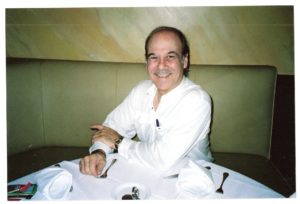The Beginning of Real Progress on Both Sides of the Bay
[AdSense-A]
As you and we noted last time, Field and Osborn were bitterly disappointed with the loss of almost their entire coconut crop to “the varmints” and determined that it was time to sell, which they did, to an elderly Quaker and his son-in-law, who bought the mangrove sandbar island from them. On the mainland side “things” were beginning to happen, including the great and terrible freezes of December of 1894 and January and February of 1895. It would be those freezes that would convince Henry Flagler to extend his railroad to the shores of Biscayne Bay, and NOT because, no matter the level of protestation to the contrary by the queen bee, Mrs. Tuttle “sent Mr. Flagler some orange blossoms,” which she absolutely, positively, totally DID NOT.
Activity was going on in other areas, including a bit south of what, on July 28, 1896, would become the City of Miami. It was there that the Reverend Solomon Merrick and his family, late of Duxbury, Massachusetts, would move to their ten acre “plantation,” which was, as they were to learn upon their arrival, anything but. It was in fact, one-half acre of guava and nine and one-half acres of weeds. But young George was a strong kid, as was his brother, Richard, and they got to work “fixing the place up.”
Meantime, there was activity in what would become Homestead (which, in 1913, would become only the second incorporated municipality in Dade County, today’s Miami-Dade County) as a group of Jewish men from the real Palestine came there to learn how to farm, which is what many of them did before going back to the middle east. That, in the last years of the nineteenth and the earliest years of the twentieth century, would occur prior to the decision by Mr. Flagler to build the Key West Extension of the Florida East Coast Railway, and that herculean and legendary feat would become “the greatest railroad story ever told,” of which there happens to be a book with that exact title.
On the east side of Biscayne Bay, much was happening as “elderly Quaker” John S. Collins (sound familiar?) and son-in-law Thomas J. Pancoast began to rebuild the property they had purchased from Field and Osborn. By fencing off the growing area, they were able to keep the above noted and said “varmints” away from the fragile young sprouts which seemed to thrive in the sandy soil. It would, incidentally, be Collins and Pancoast who would plant a long line of Australian pine trees specifically to serve as a wind break to protect the then-already luxuriant growth of their flora. Interestingly enough, some of those majestic trees remain in the exact place in which they were planted, the median of a north—south street on Miami Beach known, strangely enough, as “Pinetree Drive.”
How, though, you now ask, did people get over to the beach side and was there any reason for them to do so? The answer, of course, is “yes,” because Avery Smith and his partner, Jim Warr, had purchased the building toward the end of South Beach from a fellow Connectican (person from Connecticut) which was called the Ocean Beach Casino, which was a bathing, not a gambling, casino. They changed it to “Smith’s Casino” and from there the story really becomes more fascinating and intriguing and next issue (column) we will really begin to delve into the histories on, of and about both sides of Biscayne Bay, with nothing made up, nothing other than factual statements and, later on, the debunking of all of the “Miami myths.” We’ll be, as always, back with you shortness.
[si-contact-form form=’2′]


